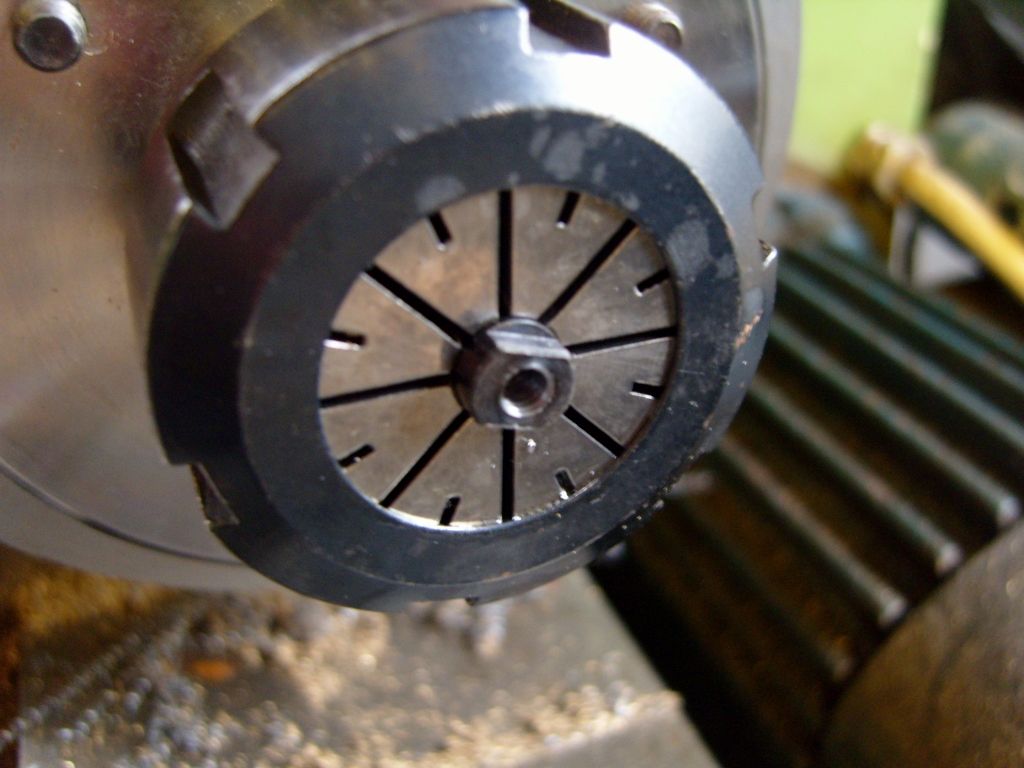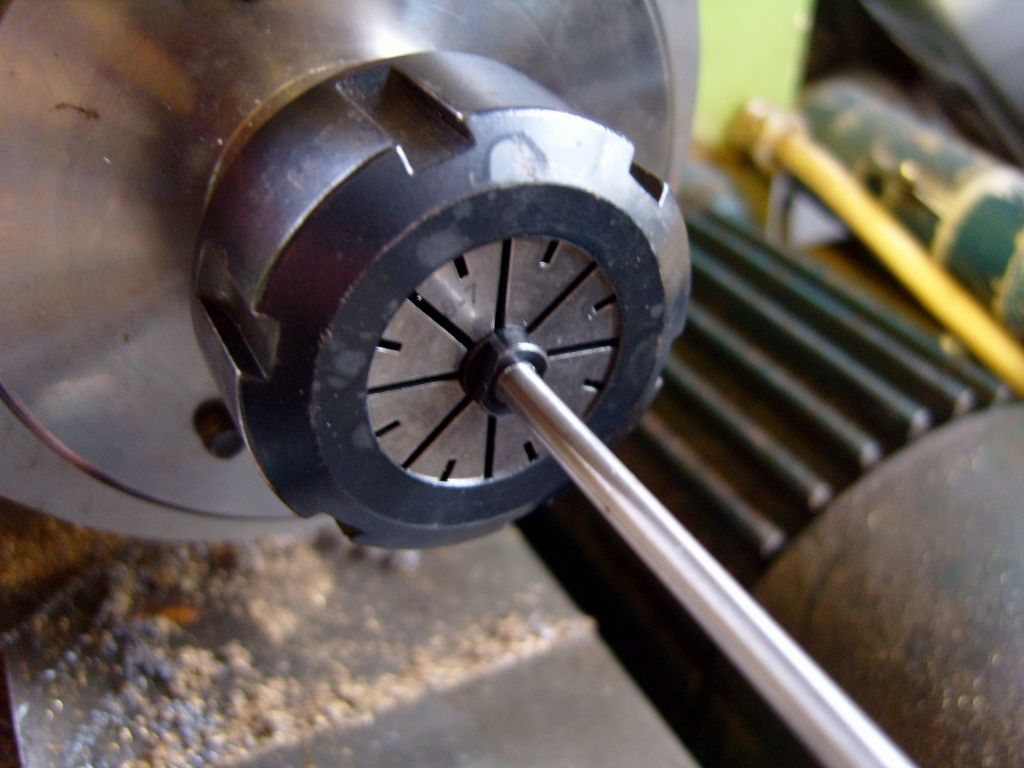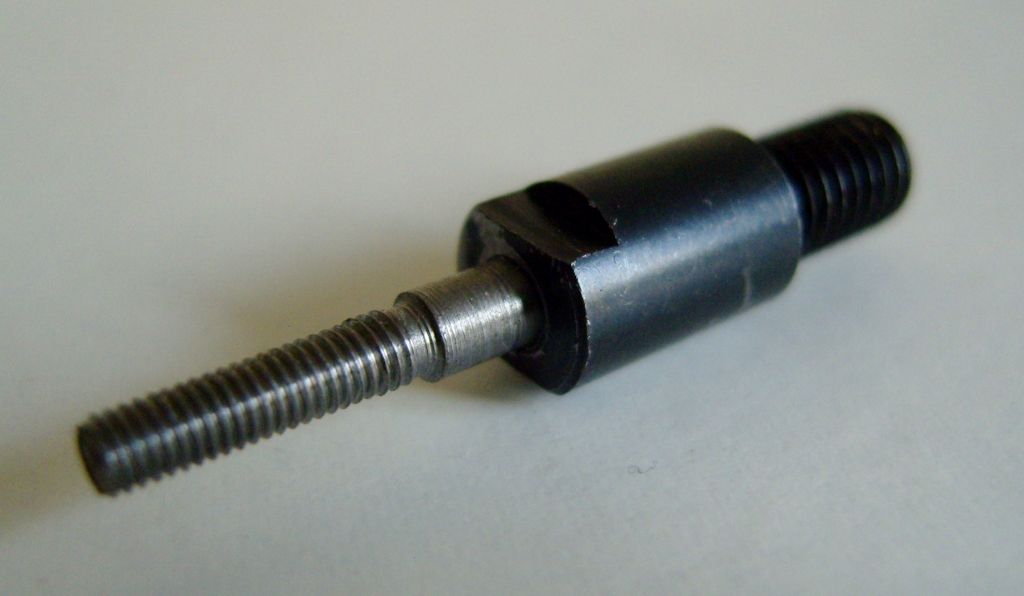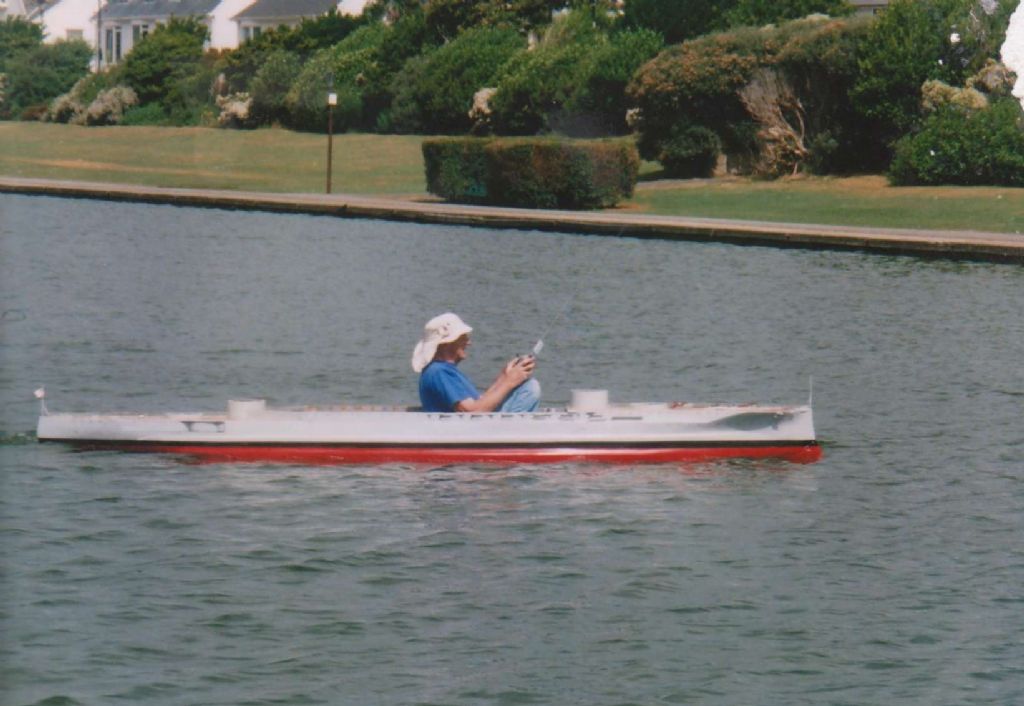Hi, having been a bit heavy handed the other day when using my threaded insert riveter, this hapened to the 3mm pulling pin.

So today I set about repairing it. First things first, I measured the diameter and length of the plain shank portion and then the overall length of the the plain shank and the threaded portion. I then cut off the plain shank and mounted the pin into my ER collect chuck and faced off the last little bit of the plain shank. I then drilled and tapped it 6mm deep for a 4mm internal thread.

I then threaded a length of 4mm silver steel about 4mm long at one end. Using a little Loctite 270 studlock, I screwed it in as tight as I could, into the threaded hole that I had just made in the pulling pin.

This was then cut off just slightly longer than the overall measurement I had made earlier. It was then faced off to the correct length and turned down to the diameter of the plain shank portion and then to the 3mm diameter for the length of the threaded portion and finally threaded 3mm.

I then finished putting in the rest of the inserts with success.
Regards Nick.
Edited By Nicholas Farr on 07/12/2015 22:17:55
 JasonB.
JasonB.















